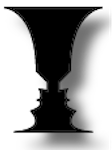
Where do Eastern Medicine and Western Medicine diagnoses align? Where do they differ?
 The practitioners in both medicines (Eastern and Western Medicine) engage in listening to the patient's presentation and medical history, perform a physical examination, provide advice and prescribe appropriate course of treatment. Same patient, same signs and symptoms, but very different ways of organizing the information. ’What’ practitioners think about and ‘how’ they integrate the data is accordingly with their own clinical reasonings. Both medicines diagnoses have strong internal coherence between theory and clinical practice that are valid within their respective paradigm. While Western Medicine is more technological, relies on quantitative measurements and is increasingly evidence-based, Eastern Medicine is minimally invasive, relies on qualitative assessments and still remains largely experience-based. The goal of diagnostic evaluation into a Western Medicine approach is to arrive at a precise description of a disease process. In Eastern Medicine the practitioners base their diagnostic on four methods, “wàng wén wèn qiē” (translated as: “observe, smell/listen, inquire, pulse feeling”), and access the inner human world through intuition, experience, and especially sensory awareness tools. In the diagnosis process, Western Medicine aims to identify the disease, while Eastern Medicine focuses on energy condition(zheng) and its disturbances.
The practitioners in both medicines (Eastern and Western Medicine) engage in listening to the patient's presentation and medical history, perform a physical examination, provide advice and prescribe appropriate course of treatment. Same patient, same signs and symptoms, but very different ways of organizing the information. ’What’ practitioners think about and ‘how’ they integrate the data is accordingly with their own clinical reasonings. Both medicines diagnoses have strong internal coherence between theory and clinical practice that are valid within their respective paradigm. While Western Medicine is more technological, relies on quantitative measurements and is increasingly evidence-based, Eastern Medicine is minimally invasive, relies on qualitative assessments and still remains largely experience-based. The goal of diagnostic evaluation into a Western Medicine approach is to arrive at a precise description of a disease process. In Eastern Medicine the practitioners base their diagnostic on four methods, “wàng wén wèn qiē” (translated as: “observe, smell/listen, inquire, pulse feeling”), and access the inner human world through intuition, experience, and especially sensory awareness tools. In the diagnosis process, Western Medicine aims to identify the disease, while Eastern Medicine focuses on energy condition(zheng) and its disturbances.
